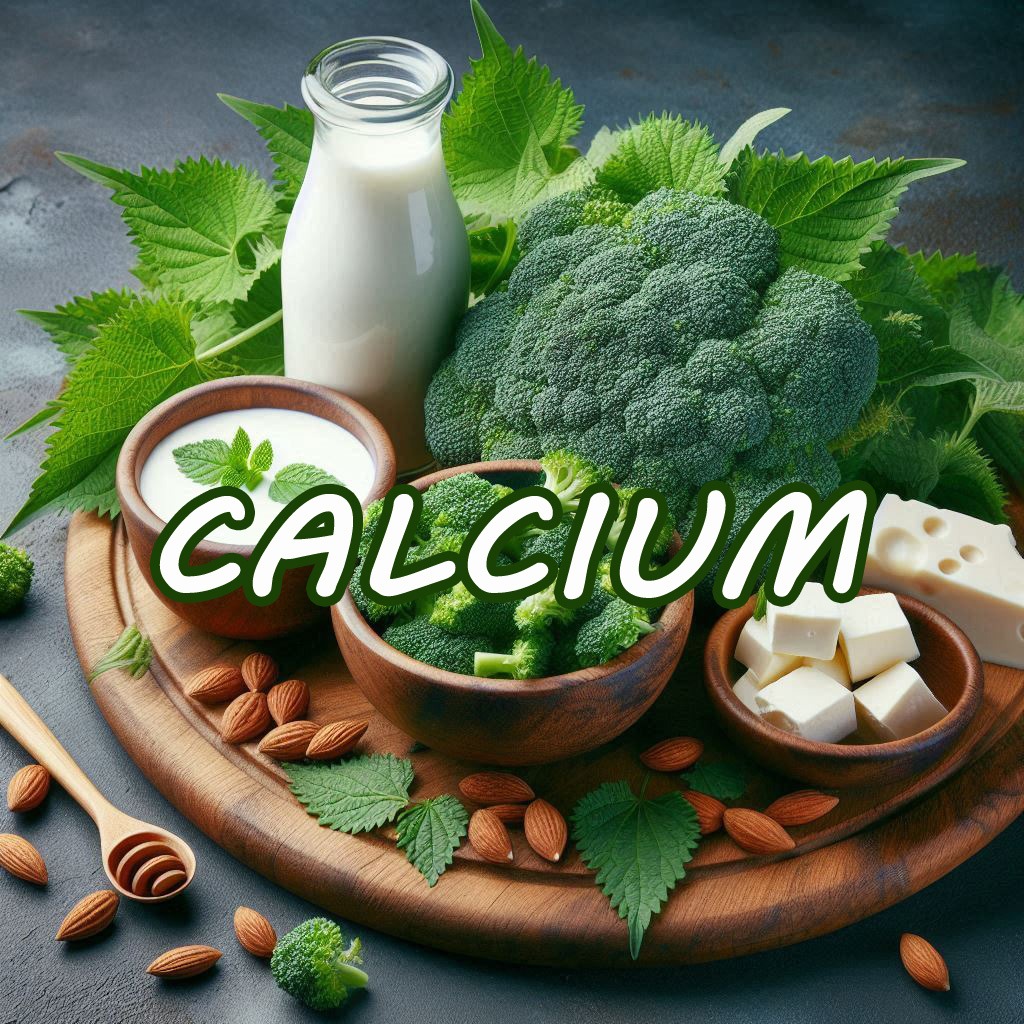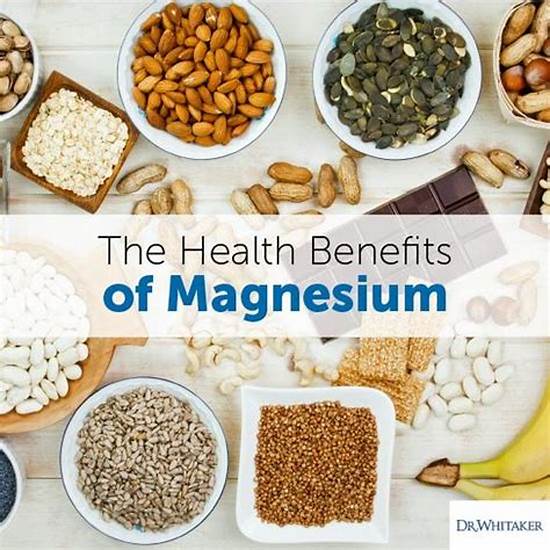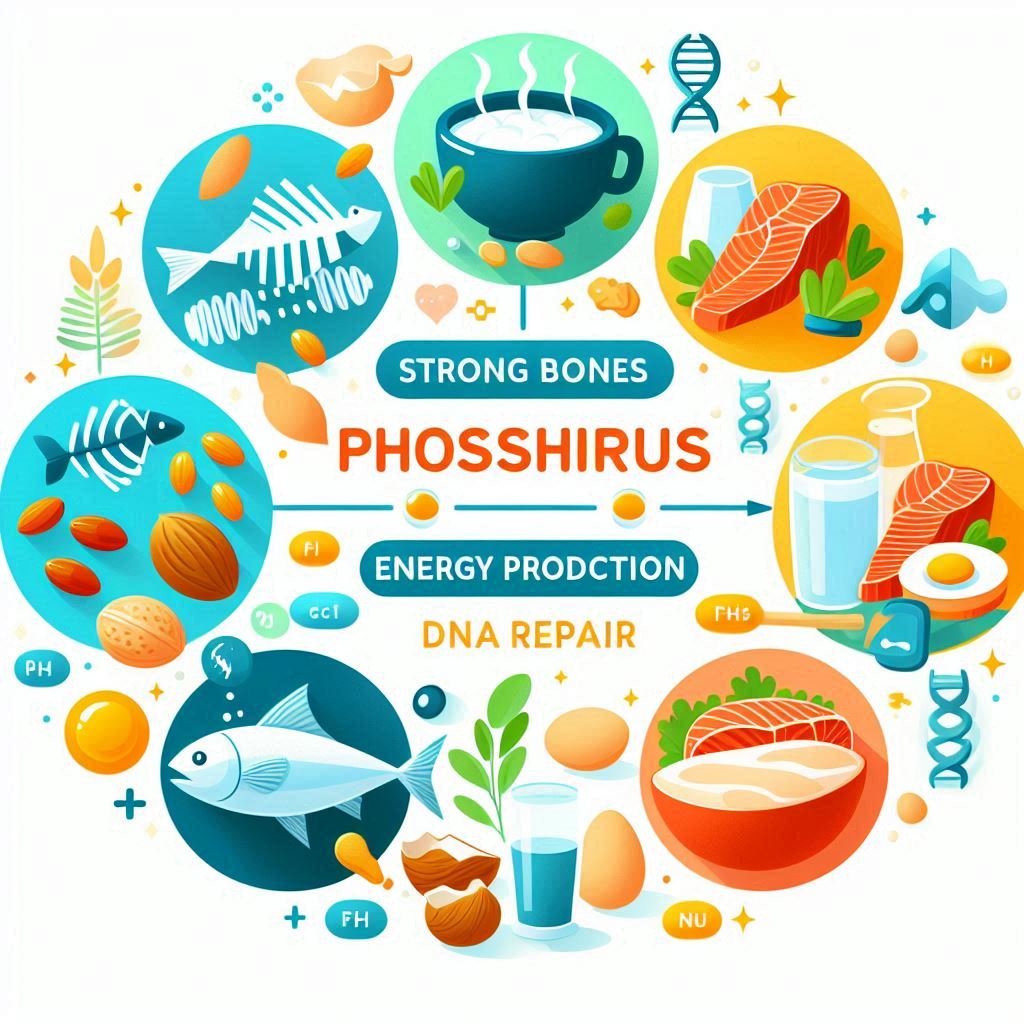The Vital Role of Calcium in Health
Calcium, often associated with strong bones, is essential for overall well-being. It comprises 99% of our skeletal structure, providing strength and density. Beyond bones, calcium supports muscle function, nerve transmission, and blood clotting. Dietary sources include dairy products, leafy greens, and fortified foods. Adequate intake prevents osteoporosis and ensures proper heart function.
Health Importance of Calcium
Calcium plays several vital roles in the human body, Here are the important ones
- Bone Health: Over 99% of the body’s calcium is stored in bones and teeth. It provides strength and structure, supporting bone formation, growth, and maintenance.
- Muscle Function: Calcium is essential for muscle contraction. When a nerve signal reaches a muscle, calcium ions are released, allowing the muscle fibres to contract.
- Nerve Transmission: Calcium enables nerve cells to communicate with each other and with muscles. It ensures the proper functioning of the nervous system.
- Blood Clotting: Calcium is crucial for blood clot formation. It activates platelets, preventing excessive bleeding when you’re injured.
- Cell Signaling: Calcium acts as a second messenger in various cellular processes. It regulates enzyme activity, gene expression, and hormone secretion.
- Heart Health: Calcium is necessary for heart muscle contractions, and maintaining a regular heartbeat.
Symptoms of Calcium Deficiency
Calcium deficiency can lead to various symptoms. Here are some signs to watch out for:
- Muscle Cramps and Spasms: You might experience muscle cramps and spasms, especially in your hands, feet, or face.
- Tingling and Numbness: Numbness and tingling sensations can occur in your hands, arms, feet, legs, and around the mouth.
- Weakness and Fatigue: Low calcium levels may lead to weakness and fatigue.
- Twitching or Tremors: Uncontrolled muscle twitching or tremors can be a symptom.
- Difficulty Speaking or Swallowing: In severe cases, calcium deficiency may affect speech and swallowing.
Remember that subtle symptoms can worsen over time, so it’s essential to address any concerns with your healthcare provider.
Sources of Calcium
- Seeds:
- Poppy Seeds: Just 1 tablespoon (9 grams) provides 127 mg of calcium, which is 10% of the recommended daily value (DV).
- Sesame Seeds: 1 tablespoon (9 grams) contains 7% of the DV for calcium, along with other minerals like copper and iron.
- Cheese:
- Parmesan: A calcium powerhouse! An ounce (28 grams) delivers 242 mg (19% of the DV).
- Brie: Creamy and delicious, but with 52 mg (4% of the DV).
- Yogurt:
- It is an excellent calcium source, plus probiotics for gut health. Boosts immune function and nutrient absorption.
- Leafy Greens:
- Kale: Rich in calcium.
- Broccoli: Contains this essential mineral.
- Bok Choy: Crunchy and calcium-packed.
- Fortified Foods:
- Calcium-Fortified Orange Juice: A tasty way to boost your intake.
- Plant-Based Milk (like almond, soy, or rice): Fortified versions provide calcium.
- Winter Squash: A veggie with hidden calcium content.
- Edamame (Young Green Soybeans): A protein-rich snack that also contributes calcium.
- Tofu (Made with Calcium Sulfate): A versatile plant-based option.
- Canned Sardines and Salmon (with Bones): These fish provide both calcium and omega-3s.
- Bread and Flour Made with Fortified Flour: Check labels for added calcium.
Remember to mix and match these foods for a balanced calcium intake!
Herbal Plants With Good Levels of Calcium
Herbs can be excellent sources of calcium, providing a natural way to boost your dietary intake. Here are some herbs known for their calcium content:
- Nettle (Urtica dioica): Also called “stinging nettle,” nettle leaves are rich in calcium. They also contain iron, magnesium, B vitamins, and potassium.
- Oat Straw (Avena sativa): Oat straw is not only high in calcium but also provides magnesium, making it a valuable herb for bone health.
- Plantain (Plantago major): Plantain leaves offer calcium along with other beneficial nutrients.
- Dandelion (Taraxacum officinale): Dandelion greens contain calcium and are often used in salads or herbal teas.
- Basil (Ocimum basilicum): Basil, commonly used in cooking, also contributes to your calcium intake.
- Chamomile (Matricaria recutita): Chamomile contains significant amounts of calcium and magnesium.
- Nettle (Urtica dioica):
- Health Benefits: Nettle leaves, also known as “stinging nettle,” are mineral-rich. Alongside calcium, they contain iron, magnesium, B vitamins, and potassium.
- Usage:
- Herbal Tea: Steep dried nettle leaves in hot water for a calcium-infused tea.
- Smoothies: Blend fresh nettle leaves into your favorite smoothie for added nutrients.
- Chickweed (Stellaria media):
- Health Benefits: Chickweed is another calcium powerhouse.
- Usage:
- Salads: Add fresh chickweed to salads for a boost of calcium.
- Infusions: Steep dried chickweed in water to create an herbal infusion.
- Red Clover (Trifolium pratense):
- Health Benefits: Red clover flowers provide calcium and other beneficial compounds.
- Usage:
- Tea: Brew red clover flowers for a soothing and calcium-rich herbal tea.
- Raspberry Leaf (Rubus idaeus):
- Health Benefits: Raspberry leaves offer calcium and magnesium.
- Usage:
- Tea: Make raspberry leaf tea by steeping dried leaves in hot water.
Remember to explore these herbs in your culinary creations and enjoy their health benefits!
Here are some delicious calcium-rich recipes you might enjoy:
- Strong Bones Smoothie:
- Ingredients:
- 8 fl ounces of Fat-Free Milk
- ½ cup Plain Nonfat Greek Yogurt
- ½ cup Collard Greens
- ½ Medium Banana
- ½ Medium Orange
- 3 Medium Strawberries
- 1 tablespoon Sesame Seeds
- This smoothie is high in calcium and other nutrients needed for strong bones.
- Ingredients:
- Calcium-Rich Cucumber Juice:
- Ingredients:
- ½ Pineapple (or 3 cups frozen pineapple, thawed)
- 8 Celery Stalks
- 2 Large Cucumbers
- 2 Limes
- A refreshing juice with 110 mg of calcium per serving.
- Ingredients:
Organizations and bodies that actively promote and raise awareness about calcium
Several organizations and bodies actively promote and raise awareness about calcium and its importance for bone health. Here are some notable ones:
- Bone Health and Osteoporosis Foundation (BHOF):
- Mayo Clinic Health System:
- Mayo Clinic provides information on calcium intake, absorption, and its role in maintaining bone health. They emphasize the significance of vitamin D for effective calcium absorption.
- American Academy of Orthopaedic Surgeons (AAOS):
- AAOS highlights the importance of calcium for strong bones and teeth. They emphasize that calcium must be absorbed from the foods we eat and discuss the role of vitamin D in this process.
- Harvard T.H. Chan School of Public Health:
- Their Nutrition Source section provides insights into calcium and its impact on health. They discuss calcium homeostasis, parathyroid hormone, and vitamin D’s role in calcium absorption.
Remember to explore these resources for valuable information on calcium and bone health!
Other links
Benefits of calcium to the body






Review Calcium.
You must be logged in to post a review.